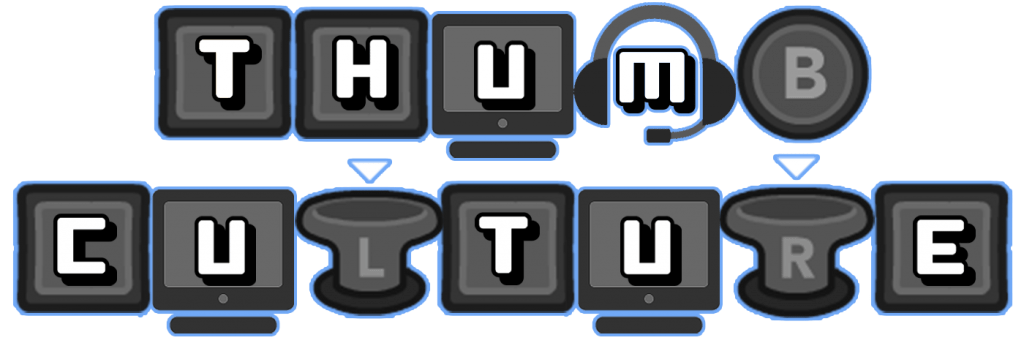
Following up on the success of Tails of Iron, Manchester based Odd Bug Studio has developed and released a sequel, Tails of Iron 2: Whiskers of Winter. Published by United Label, it was released on 28th January 2025 on PC (Steam), PlayStation 4/5, Xbox One/Series S&X, and Switch.
You can read our review of the first game in the series here.
Whiskers of Winter by Stuart R.R. Little
The story begins with a little history lesson. In the not too distant past, The North had fought a vicious war against the Darkwings, The War of The Rift. Eventually, the warden of Winter’s Edge had done enough to win that war, and peace had followed. A long enough peace for the Rats of The North to forget about the Darkwings. Unbeknownst to them, their enemy had been rebuilding strength, and now once again threatened the Ratdom. King Rattus brings a bastard prince to Winter’s Edge. This prince must be kept secret, and raised by the warden so he is ready to face the battles that lay ahead.
We jump ahead to when the older and stronger prince, player character Arlo, is taken on his first hunt by his father. The following night, Winter’s Edge is attacked and destroyed by Darkwings, leaving Arlo orphaned, and his home in ruins. Arlo must now take up the mantle of warden and rebuild Winter’s Edge to be ready once again to defeat the Darkwings.

Gameplay
Tails of Iron 2 can probably best be summarised as a combat-focused, 2D action-adventure RPG with a small amount of metroidvania inspired exploration. The brutal, challenging combat is the main draw, though. Expect to face many difficult fights as Arlo travels the Ratdom recruiting help for his cause. In the opening portion of the story, I don’t think there was a single fight I didn’t fail at least once. I eventually got good though, even managing to beat a couple bosses on my first attempt.
There are 3 difficulty settings, essentially equating to easy, normal, and hard. The difficulty you pick at the start is set for your entire play through, so choose wisely. I played on Normal, the recommended difficulty, for this review.
Tools of War
Enabling Arlo to dispatch enemies are his trusty weapons, of which he carries 3; one-handed, two-handed, and ranged. There are plenty of combinations available, offering up different feels for battles. As I usually do, I quickly settled in to just using light attacks, dodging and parrying. As enemies got tougher and more nimble, I did start to rely on my ranged weapons for additional damage.
Enemies have multiple attack types to deal with. White attacks can be blocked by a shield and are usually ranged projectiles. Yellow attacks can be parried with good timing, but as long as you’re not too slow the damage will be blocked by your shield at the cost of a short stagger. Red attacks are heavy and unavoidable, and must be dodged. Paying attention and learning each enemies’ attack patterns is vital, especially in boss battles. One mistake could lead to several heavy hits and a prompt death. I learned the hard way not to overcommit during openings; most of your attacks don’t interrupt enemy actions so beware.
Additioanlly, Arlo can find, buy, and/or craft, certain traps, potions, and tools to aid combat. Traps are elemental in nature, and trigger on enemy proximity. Potions are also elemental but are used to free Arlo from paralysing effects. The one other useful tool that can be acquired is a sharpening stone, which will temporarily increase Arlo’s melee damage. I found most of these to be good options in fights, apart from the potions with I never really engaged with. You are limited to one trap of each element at any one time, so again you need to be resourceful and strategic.
It’s Elemental, Dear Arlo
Different pieces of equippment have specific elemental properties; fire, ice, electric, or poison. These boost either your attack or defence in these areas, and will be important when deciding your loadout for different enemies. Darkwings, for example, attack with ice and have a weakness to fire. Don’t worry if you feel you won’t remember each enemies affinities. Thankfully, you can access the menu at anytime to check the beastiary for information on your current foe, and adjust Arlo’s equipment to suit the moment.
During the first half of the game, Arlo will gradually acquire attack spells in each element. These can be used to inflict some additional damage and temporary status changes to enemies. The ice and electric spells are particularly useful. Their ablity to stun foes allows you to recover or get in a couple more hits. Spells can also be upgraded, making them more effective, by finding shrines hidden throughout the world. A spell is temporarily disabled after use until you’ve dealt a certain amount of damage to an enemy with weapon attacks, so no spamming stun spells, unfortunately.

Fighting Fair
There were a few times when combat began to feel unfair. Most notably when a boss changes phases and receives lengthy invincibility. These scripted moments in fights, of which there can be a few, are set to occur at a certain percent of health. This means if your first blow in a combo hits this threshold, the following hits are wasted. Another example is when area-of-effect attacks would seemingly hit a larger area than was telegraphed. This made the damaged received feel cheap. I also felt that occasionally the parry timings would be off from what I was expecting, this could easily be my own skill issue though to be fair.
Overall though, the combat in Tails of Iron 2 felt like it hit the right balance between difficult and achievable most of the time. There’s plenty of variation in enemy design and attack types, keeping proceedings fresh and engaging.
Explore
Though Tails of Iron 2 is not shy about inflicting many deaths upon you, exploration is heavily encouraged. There’s usually a bench every couple of screens where you can quickly and easily save your progress. Additionally, benches are often accompanied by berry bushes, bug juices barrels or simply bugs, to top up your healing supplies. Thanks to these provisions, you’re never at risk of losing much progress, assuming you take advantage of them. I parked Arlo’s butt on a bench at every opportunity, no matter how close in time it was to the previous bench-butting.
The map is small, but well utilised. You’ll be revisiting areas frequently for various purposes. Helping make this as painless as possible are a series of fast travel points you can unlock. It took me a little while to realise this was an option. I’m not sure if I missed the in-game tutorial for it, or if it’s just implied when you get to travel via your PiRat friend for the first time. This system did unfortunately present one of the most frustrating bugs in the game. The map for fast travelling wouldn’t move into a position for me to select the fast travel point in the owl parliament. This meant I always had to travel to a point nearby and walk the rest of the way.

Upgrading
As enemies grow in strength, so must Arlo. Blacksmiths are available in multiple locations, and will be able to provide better equipment if you have the gold and resources. The game seemed to be very liberal with resources, so I was never really short of much. If I was, the items were generally easy to track down thanks to the ‘dropped items’ list for each enemy in the beastiary.
There’s 3 levels to each weapon/armour, and these are unlocked as you progress the story and upgrade your stalls at Winter’s Edge. I’m not sure if it’s because I did missions in a weird order, but I felt like I was stuck with the basic tier for a long time, and then suddenly very quickly unlocked tier’s 2 and 3. This felt like the case with the health upgrades too, both of which seemed to be available in quick succession.
Other Activites
Aside from the main quests, you can also undertake hunts by speaking to the leaders of different villages. These come in the form of optional bosses or fights and can be useful for gaining upgrade materials, like enemy body parts, and gold. Be warned, though, these might get a little tedious after a while. The boss fights tend to follow a pattern of having 3 stages, where the boss will run away to another location the first 2 times you deal 25% damage to them. Make sure you unlock those fast travel points to ease your pain.
I enjoyed the small side quests dotted around the world, even if they usually just amounted to finding an item and returning it somewhere else. This is a further reward for exploring the map and paying attention. When I started the game and faced my first dozen deaths, I had no idea I would eventually fill the role of a Just Eat driver too. That was a surprise.
Graphics & Audio
Tails of Iron 2‘s art style hasn’t changed much between games. It didn’t need to. The hand drawn environments and characters are gorgeous and wonderfully detailed. Charatcers and enemies are all based on animal designs, which are instantly recongnisable. From frogs to bats, rabbits to owls, each spieces is represented beautifully in Odd Bug Studios artwork.
Our review of the first game mentioned how well the parallax backgrounds work, and the team have done just as well, or better, in the sequel. Each location is richly coloured and detailed, and the lighting, ahem, shines. Enemy designs are varied and distinct while also having enough shared elements that you know what to expect from them on sight. For example, shielded, larger enemies and going to take more damage and strategy to bring down.

The narration to the story is once again provided by Doug Cockle (The Witcher), which is a perfect fit for the vibes. This is a great way of delivering the story and the deeper motivations, thoughts, and feelings of the characters. It’s especially helpful as the characters themselves don’t have any dialogue, instead communicating via small pictures in speech bubbles. Certainly helps to keep translation costs to a minimum!
Another element worth mentioning is the sound design. I feel like a lot of detail has been put into the environmental soundscape, creating a vivid, enthralling experience. Each squish of a weapon hitting flesh, or shing of sword on shield is delivered in crisp sound effects that make the combat even more satisfying. I very much enjoyed the weird enemy vocalisations, especially the spear twirling Darkwing. You’ll know the one when you hear it.
Longevity
You’ll have no trouble getting time and content for your money. I’ve played through around 75% of the main story having completed a fair few optional hunts and bosses along the way, and I’m approaching 15 hours of gameplay. At a guess, to complete everything would take somewhere between 25-30 hours, depending on the difficulty you play at and your skill.
Final Thoughts
Despite the few frustrations that I faced, I enjoyed Tails of Iron 2: Whiskers of Winter. I love to see small studios create games they’re passionate about, especially when the studio is close to home. Odd Bug Studios have carved out a great identity for their Tails of Iron series. I’ll be checking out the first title, and whatever they create next. If you’re looking for a medium length game, with tough as nails combat to test your metal, try this.
Tails of Iron 2: Whiskers of Winter gets a Thumb Culture Gold Award.
Disclaimer: A code was received in order to write this review.

YouTube | Facebook | Twitter | Instagram | Discord | Podcast

great article, thanks for info.